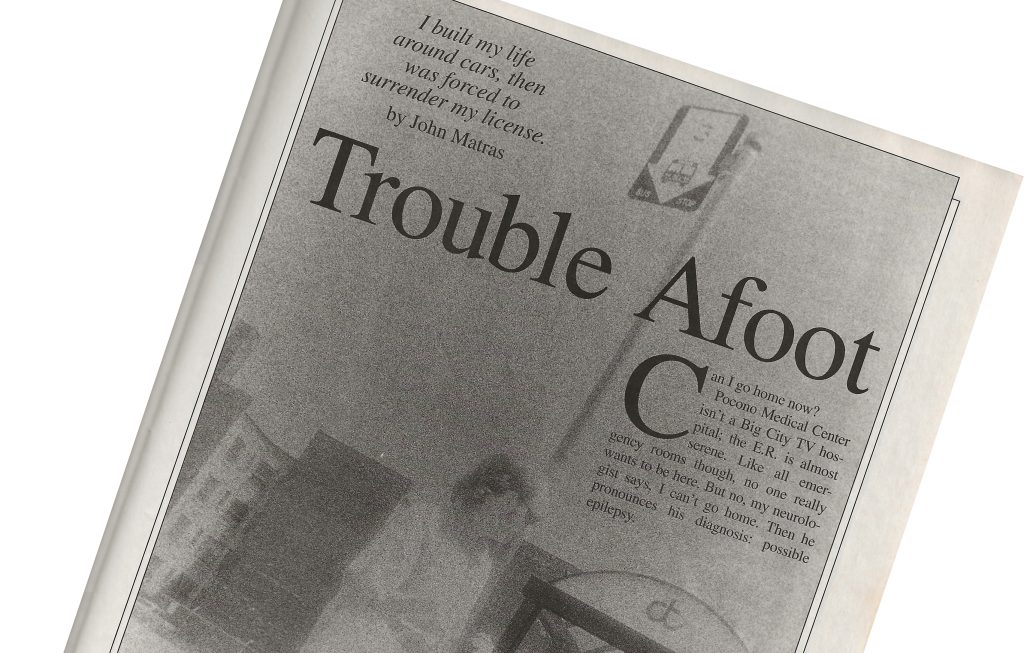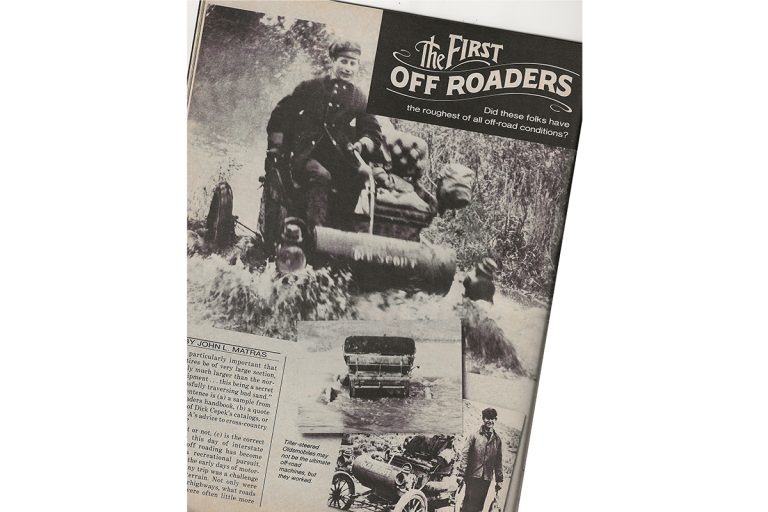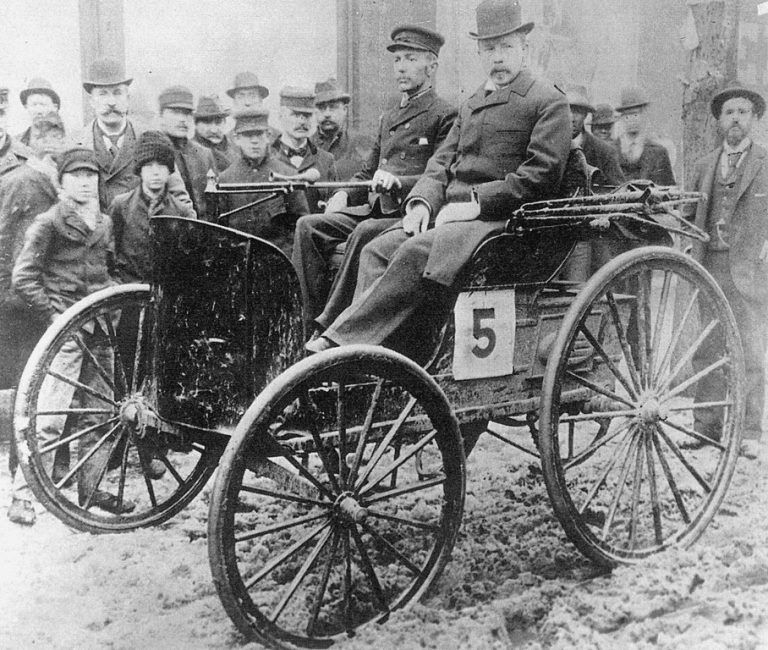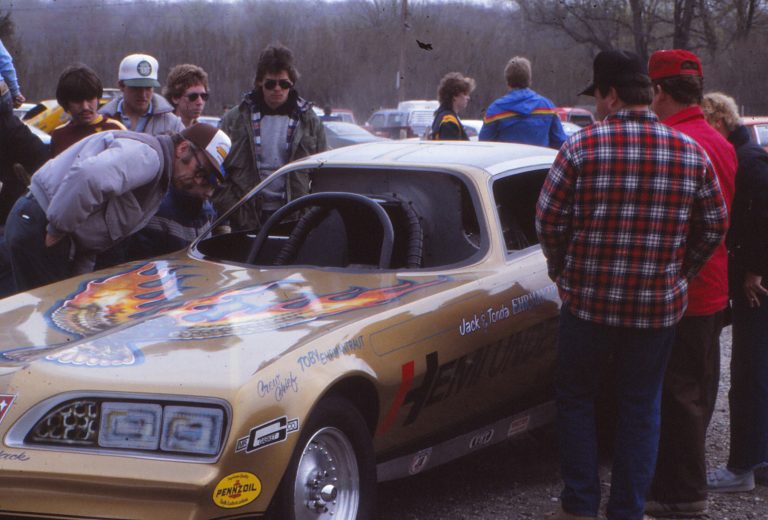Feature about how I lost my driver’s license (and more) due to epilepsy, originally published in AutoWeek June 26, 1995

Can I go home now?
Pocono Medical Center isn’t a Big City TV hospital; the E. R. Is almost serene. Like all emergency rooms though, no one really wants to be here. But no, my neurologist says, I can’t go home. Then he pronounces his diagnosis: possible epilepsy.
I’m so sick I can hardly talk. My wife Mary Ann starts to ask questions as I reel with the doctors words. I can only half listen. This is no appendectomy, which I’ve had, no dirt bike broken bone, ditto ditto ditto, good for later bragging rights, perhaps. My friend Paul has adult-onset epilepsy. He has been unable to drive ever since.
That is inconceivable. This can’t be happening. I’m a car guy. I have the car gene. It was only a few hours ago, as I sat contemplating a pleasant drive in a cool car, that all this started.
The late summer dappled sunlight was dancing on the bright blue hood of the new Porsche 911 in my driveway. Porsche Cars North America calls it Riviera Blue. It’s the jellybean color from the TV commercial but I think of it as the color of the Pinto I had owned in the early’ 70s. The Porsche wasn’t mine, but I’d have it for a week. It’s one of the benefits of being an automotive journalist – one is allowed, no, persuaded – to drive all sorts of exotic and even ordinary cars.
Although this was the newest model, the flat six made familiar thrum at idle. The old VW beetle -like floor-mounted pedals still felt goofy underfoot at first. The dashboard was improved, but still archaic. “Yes,” I thought. “The Stuttgart loyalists will be happy in here.”
Except for this pungent, almost overwhelming aroma of leather, like burying your face in a new baseball mitt. Whose idea was that?
And things got really weird. The powerful feeling of deja vu (understandable perhaps in a 911) gave way to profound sadness, a deep melancholy that made no sense whatever. I didn’t have time for that. I shook it off, turned off the car, and started to walk toward the house. Then…
There’s a real sense of bewilderment as you start regaining consciousness when you attempt to gather the facts.
Where am I? Let’s see: on my back. On my gravel drive. In front of the Aerostar. Helluva place to take a nap. Must’ve blacked out. This is very disconcerting but I’m a Real Man. Get up, John. You were unconscious. You’re not now.
I didn’t feel particularly chipper the rest of the afternoon, but after dinner, we decided to go out for ice cream. I started the car, buckled up and commented to my wife, Mary Ann, and how odd it was that Porsche had so little little changed the 911’s interior. Then I felt weird, and said so.
I was out, limp, motionless and staring vacantly at the headliner. It lasted no longer than the few seconds it took Mary Ann to call my name, shake me and then reach across the steering wheel to turn off the ignition. Thank goodness the car was a neutral. As I came around for the second time, I knew that even Real Men have to go to the Emergency Room sometimes.
Mary Ann drove our Aerostar to the hospital. I rode. The right side of the minivan would soon become my assigned spot on the road.
Sitting in the obligatory wheelchair, I waited in cardiac for an empty space. Because of Paul’s experience, I had already suspected –and feared – a diagnosis of epilepsy. When became clear that the doctors shared the suspicion, I was no less crushed for having expected it. The next three days as an inpatient consisted mainly of waiting, punctuated only by tests that would determine why an otherwise healthy 46–year-old male had gone down like a fainting goat.
A CAT scan (and later MRI) showed no tumor, embolism or hemorrhaging. I made a lot of lame jokes about them finding nothing in my head. An initial electroencephalogram revealed normal brain waves but a second EEG would be more definitive. They induced sleep deprivation and hyperventilation – shining a strobe light into my face more closely than I ever remembered in the 60s – all in attempts to provoke a seizure. My nervous anticipation was replaced by relief when the technician indicated that I had “passed” the test. Only normal brain waves.
Absolutely! I was so normal I could key the Bell curve. “Thank God,” I thought. “I’m clear. I’m okay. No epilepsy.”
But no. According to my neurologist, epilepsy doesn’t work that way. A normal pattern now doesn’t mean that it had been abnormal earlier. Or wouldn’t be again.
The doctor gave us some pamphlets, and explained that the preferred term today is “seizure syndrome.” It’s more accurate because is not as precise (easier to hit a bigger target), and is less pejorative and that there is no “madhouse” stigma. The disorder covers everything from gran mal, the popular perception of epilepsy with this major convulsions, to what appeared to be short lapses of attention. In layman’s terms, it refers to a short-circuit or electrical storm in the brain. The doctor said I had experienced “partial complex” seizures, sited in the left temporal lobe. I had perceived a strong smell of leather as I sat in the Porsche because the olfactory sense is near the temporal lobe, and is part of the “aura,” or strange feeling that often precedes an epileptic seizure.
Epilepsy can begin at any age and it is believed that three-quarters of the cases result from head injuries (more reason than ever to buckle up). The seizures can start immediately, onset sometimes does not occur for years. Mine may have stemmed from a 1972 automobile accident in which I was hit in the back of the head by a flying bottle of antifreeze. Or it could been caused by something else. We’ve all fallen off swing sets, haven’t we?
Mary Ann asked about driving. Remarkably, the doctor said that I could, if I were accompanied by another driver. How would this help in the case of another incident I didn’t know, but I didn’t argue. It was almost a reprieve. Although a chaperone would restrict my mobility somewhat, I could still get behind the wheel.
Within the month however, a severe allergic reaction to the anti-seizure medication – pooh-poohed by the first neurologist – sent me to another doctor. I was anxious because doctor number two might, as I knew he should, stop me from driving altogether. And he did, notifying the state as he was required to do, of my condition. He reminded me that as a driver, I’m too must contact the state – is in the driver’s manual – adding that for someone with “uncontrolled” epilepsy, auto insurance coverage becomes invalid.
Can you spell a bankruptcy? How about killing a stranger or member of your family? Mary Ann drove the Alfa 164 home. The irony of Alfa’s then-tenuous status in the United States wasn’t lost on me. We were both cripples.
I’d had a driver’s license for almost 30 years. Yet there I was, attaching my license to a letter and slipping it into a standard business-size envelope. The 3.5 x 5.5-inch card that is my driver’s license was headed for the state capital, Harrisburg, PA.
So eagerly anticipated as a teenager, a driver’s license is a passport to adulthood: independence, transportation to a job, dating. And to the joy of driving. It was every bit as good as the Beach Boys had promised.
Yes, indeed, I Get Around, even if it was a hand-me-down two-tone turquoise 1957 Rambler. It was wheels, the license my ticket to ride.
Yet there I was, giving it up in an anonymous little ceremony. I was like a kid again. But this time, it didn’t resemble a giddy experience such as that phase usually conjures up.
Pennsylvania law requires a six-month “seizure-free” period as a reasonable assurance the seizures are under control. I am lucky. Some states require two years.
Mary Ann drove us to the post office to send off my license. Already I had begun to annoy her. At intersections, I looked out for approaching traffic. She interpreted this as a vote of no-confidence. I resolved not to watch, much less comment. My hands and feet were useless anyway. I tried my best to be a good passsenger, unnatural as that may be.
At a stoplight I made eye contact with the person riding in a car to our right. I projected my biases onto his mind.
He doesn’t look sick. Must not have a license. Wonder how he lost it. A speeder? Maybe DUI. Or hey, maybe it’s a business thing and he’s a client being driven around by that woman. Yeah, it happens. Maybe he’s just a wuss.
Sexist? Sure, but in this society, the man is supposed to drive. Driving is a Guy Thing.
I began to notice many more bunglers on the road. Maybe this is because I had the time to watch; maybe it’s just that I knew better.
Hey, Buddy, it’s right turn on red after stop. And signal your lane change, idiot, signal your turn! And turn into the nearest line, don’t drift across several. Learn to merge. The sign says “yield,” not “surrender.”
Friends started asking how I felt. That’s expected for a sick person. But I was not – am not – sick. Except for that initial allergic reaction, I felt fine. I Just Couldn’t Drive. But though physically I was fine, emotionally, there was a rolling anger and frustration.
I compensated with exercise, running stairs and lifting weights at home. I burned off 25 pounds of middle-age spread. They lift weights in Attica, don’t they?
I was confined. Living in a quasi-rural area, I was too far away to walk anywhere. Bicycling was difficult and dangerous on the narrow, hilly roads. Local transit was a joke. Mostly I traveled only with an escort. I made several trips into Manhattan for press meetings, but this required that I travel by intercity bus, my wife dropping me at the station two hours prior to departure time.
I went to Long Island for a story. Again, a bus trip to New York’s Port Authority bus terminal, a taxi to Union Station for the train ride to Huntington Station, then back again. The bus made good time, the cab had all four tires on the pavement only at the beginning and end of the trip, and the train was inoculus. But still, “intermodal” travel is good only in an urban planner’s notebook. The trip, thanks to the lag between modes, took twice as long as it would by car. And a total about $50 in fares, much more than the cost of gasoline and tolls for the same journey in a car. Add to this the discomfort of traveling with people I preferred not to be among, plus the frustration of watching ever so many cars and drivers, and, well, it’s just a heckuva way for an automotive journalist to get around.
No one, I quickly realize, is indispensable.
With my magazine work dwindling, I signed on for two book contracts. Quickly, I recognized that one of the projects required library search and travel to conduct on-site interviews. It would have to be completed later. I spent my time on the other book. So I had work at least.
As Christmas approached, I began to recognize another problem, just one of many that was affecting my family life. How to buy Mary Ann a present? Forget about any surprise if she had to take me to the store to buy it.
My oldest, Amanda, was 17, however, so I enlisted her services as a chauffeur whenever her schedule is a high school senior – band, scholastic scrimmage, part-time job at the local radio station, and (why can’t this wait until, say, age 30?) dates – permitted. A collateral benefit was that I could bestow upon her some (ahem) advanced driving tips. Unlike Mary Ann, Amanda proved a captive audience. It was after all, still my car.
Gently, gently Mandy. An 85 GL H Turbo isn’t the best in the snow, and Comp T/A’s aren’t the best snow tires.
We’d make it up a hill the state police had closed for downward travel, but just barely. On an alternate route home, we passed an intercity bus half in the ditch, the car started a lurid slide.
Off the brakes, off the brakes, steer, steer!
The Omni managed to regain a tenuous grip. Had I not been there, Mandy might’ve joined that bus.
We were talking more, spending more time together than we might have otherwise, taking the good with the bad.
There were other consequences however, for Cari, 15, and Katie, 12. Cari missed out on a party in January with her mother out of town, Amanda somewhere else, and no friends able to give her a ride. Katie had forgo being on the swim team as we couldn’t reliably get her to practice.
Winter was a worry for Mary Ann. She doesn’t like driving on snow, and despite our van’s four-wheel-drive and Michelin snow tires – all obtained after the horrendous winter of 1993-94 – she’d rather I did the job. Fortunately the winter of 1994 – 95 would grind slowly past with almost no snow.
I had designated March 1 Liberation Day. It was, at least, the six-month anniversary of the episode that had started all this. But Drivers Licensing cited May 29, the date on which the bureau had recorded my surrendered license. They called the six month waiting period a “sanction,” just as for a DUI or other violation-related suspension of driving privileges.
A 24-hour EEG (I was wired with the tape recorder attached to my hip) in mid-January resulted in a letter from my neurologist stating that I was medically fit to drive at that time. The state called to apologize (wow!) and accordingly, adjusted my date to March 1. I scheduled an examination for March 1, celebrating the fact that February is only 28 days. They were however, very long days.
Working from home office has its advantages, including a short commute, liberal dress code and so forth. But I craved outside contact. I was isolated and the gray-brown February was depressing.
March 1 finally came. There had been no reoccurrence, no physical symptoms at all. My neurologist signed the appropriate form. I enclosed a self-addressed, next-day mailer return envelope and sent it by next-day mail to Harrisburg.
If February had felt long, those days in early March were interminable. I calculated delivery time, interoffice mail handling, the time it takes bureaucrats to review a form and a clerk to deposit the envelope in the mail. How long could that take?
One week later, Mary Ann came home from the post office, hand me the unopened next-day mail envelope and said “Now you return to being your nice pleasant self?”
Had I been that much of a grouch?
“Yes.”
There it is, my license, looking exactly as it had months before. Alleluia, I’m a driver again. I am Godzilla coming back to life; let’s go stomp something. I want horizon, a vision of interstate pavement V’ing into the far ahead. The asphalt is seductive. Hell, I can work!
At first it was pleasant enough to drive to mundane destinations. I went to the post office to pick up the mail, the barbershop for an overdue shearing. I took Mary Ann out to dinner. I went places. All By Myself. Not to be antisocial, but because it’s nice to be trusted out alone.
I know the tenuous patterns of life, and I know, that like a windblown dune, things can change overnight. If I go off my medication, I must surrender my license again for another waiting period. I hope not to be on medication forever, but I can’t see the future. If I have a recurrence while on it, my life, livelihood, and lifestyle will again change. Others deal with much worse circumstances. For now, I enjoy the freedom to come and go where in when I choose, the pleasure of a solo drive, the delight of a time and distance duet, the concert of a family trip.
This summer I’m really traveling; planning a 2000-mile vacation road trip, day trips, going where and when I need to go. Tomorrow I will drive to Carlisle for a swap meet. You do a lot of walking in a swap meet.
But then it’s all voluntary.
| E |
pilogue
Life has since gone on. It has been almost 30 years since my first seizure. It look me almost a half-dozen medications to find one without unacceptable side effects, and there were several incidents not worth talking about.
I am still on medication. I call it my elephant repellant. I may not need it. There are likely to be no elephants in the neighborhood, but if there is, he may stomp my petunias. The cost is too high.
Other things happened. I got a lot of mail, mostly from those who were new to epilepsy or knew someone who was. The letter that hit me hard was from a 27-year old Navy fighter pilot who had a seizure. What should he do. I didn’t have the heart to tell him he’d likely never strap into a fighter jet again. I’d let the Navy do that. It’s their decision, after all. I’ve wondered what happened to him.
I joined a computer list serve group of people with epilepsy. Indeed, some did have it worse than I did. There was a woman who couldn’t ride through the woods in a car. The flickering light would trigger her “photosensitive” epilepsy. Then there was a person for whom the only effective medication caused absentmindedness. She stuck Post-It Notes to her clothing as reminders.
I was also asked, and gave permission, for my article to be republished by the American Epilepsy Society, and translated into Portuguese to be shared with a Brazilian epilepsy association.
And then there was the Ken Purdy Award for Excellence in Automotive Journalism. I was asked to write this article by Kevin Wilson, one of the editors at AutoWeek, for whom I was a “contributing editor.” I declined, believing that I wasn’t supposed to be the subject of an article, at least not one written by myself. That was an indulgence, I thought, for a Serious Writer. Fortunately, after repeated nagging, I relented, and the result is the article above.
Fortunately, that is, because without that I likely would never have received the Ken Purdy Award, perhaps the highest honor in automotive journalism. One Purdy is awarded by the International Automotive Press Association each year, and the more famous recipients you might know are Brock Yates and Chris Economaki, though the includes names the constant reader of automotive literature has likely seen. It’s a heady group to be in.
The award in 1995 was presented at the opening breakfast for media before the press days at the New York International Auto Show, with several thousand journalists from around the world in attendance (journalists of course attracted to free food, or even big trays for scrambled eggs).
This is a transcript of that presentation:
Slayton White: As president of IMPA, one of the things I enjoy doing most is presenting the Ken Purdy award because excellence in writing just can’t be taken for granted. The man for whom the Ken Purdy award is named is one of the best auto writers America has ever produced. One of the distinguishing characteristics of his writing is his passion. This is his great gift to us. Ken Purdy not only understood the attraction of the automobile in all its forms but he was able to communicate the feelings that these marvelous machines engendered.
I can think of no finer attribute to Ken Purdy’s memory in this award honoring excellence in automotive writing, which is presented each year to the writer whose contributions to the field are outstanding. It gives me great pleasure to announce this year’s winter of the Ken Purdy award – John Matras for his article “Trouble Afoot,” which appeared in the June 21, 1995 issue of AutoWeek.
John, congratulations.
Accompanying John is Matt DeLorenzo, the editor-in-Chief of AutoWeek.
Matt DeLorenzo: On behalf of AutoWeek, I’m greatly pleased to see John receive this award. The story itself grew out of a discussion between John and our executive editor Kevin Wilson. Kevin couldn’t be here, but he had a tremendous amount of input in directing the story and I think that John’s piece really underscores the privilege that is to have a driver’s license and it’s a privilege that far too often we take for granted. And I couldn’t be happier that he has one this prestigious award and has won it for AutoWeek. Thank you very much.
John Matras: I’ll second that. I want to say couple of things. Thank you very much. It’s a heckuva room here, folks. To be honest with you I’ve coveted this award and looked at people who walked up on the stage to receive it, thinking it would be nice to do that myself. I didn’t know what I had to do to get it – you know, six months without a driver’s license is tough research.
As for epilepsy, which is what I was diagnosed as possibly having, it’s a demon that willy-nilly in your brain can throw the light switch off. My glimpse behind the curtain was benign and brief. My heart goes out to those who truly suffer from this disease for which there is no cure, only treatment.
I do want to make a few acknowledgments. I want to go back and thank Paul Leinart who called me in late 1981 and said, “Hey, John, were starting this column on the last page of AutoWeek.” The rest, let’s say, is history.
Also, I want to thank Kevin Wilson with whom I worked on “Trouble Afoot.” The story would not have been the same nor as good without his help.
I want to thank my daughter Mandy for enduring dad’s advice in the car when she was driving me around and chauffeuring me when I was unable to drive. And to Cari and Katie, my other daughters, for not complaining when Dad could not take them where they wanted to go… And do the parental duty that way. To my wife Mary Ann for abiding for the duration, automotive journalism’s Oscar The Grouch, and for her love and support these past 25 years. And my mom for being the best in the world. And to my oldest friend and biggest fan, my father, who unfortunately can’t be with us here today. To Dad: They put both our names on this.
This is great, folks. Thank you very much, thank you to IMPA, and to all on the committee.



